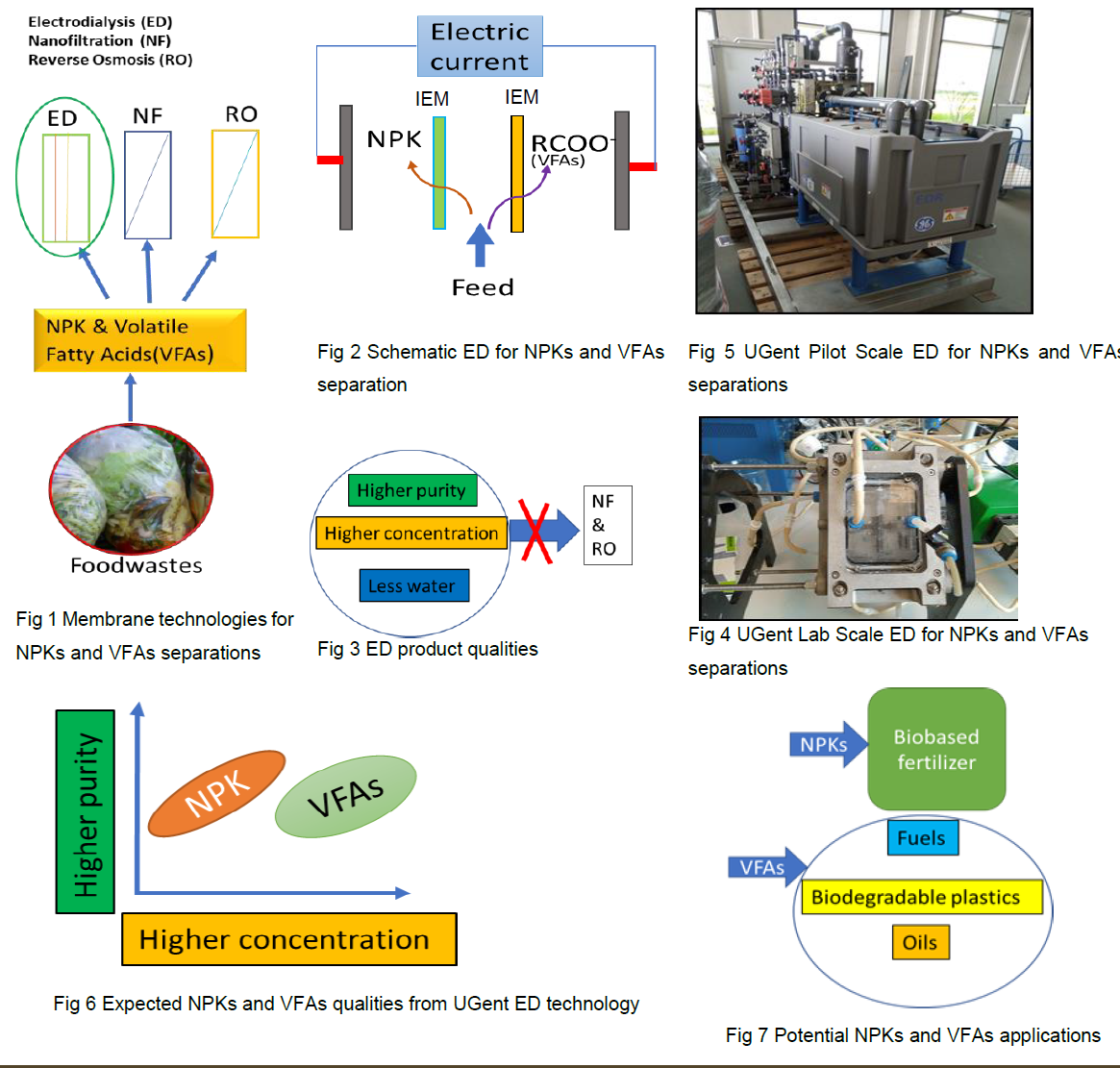Why Electrodialysis is Important to Design the RUSTICA Bio-based Fertilizer
Electrodialysis (ED), as highlighted in Fig.1 is one of the competitive membrane-based technologies for separating NPKs and Volatile Fatty Acids (VFAs) from fermented food wastes. It applies electric current, and ion exchange membranes (IEMs) to separate the NPKs and VFAs into their purer forms (Fig. 2). Because electrodialysis mainly separates the NPKs and VFAs based on their ionic charges, it produces products of higher purity, higher concentration, and less water (Fig. 3), which are mainly difficult to be attained simultaneously via Nanofiltration (NF) and Reverse Osmosis (RO). Therefore, UGent, as a partner of the RUSTICA project, targeted at closing the loop of circular economy is applying laboratory and pilot scale ED (Fig. 4, and 5) to produce NPKs and VFAs of higher purity and higher concentrations (Fig. 6). The purer NPKs produced shall be used for bio-based fertilizer applications whereas the VFAs shall be used for fuels, biodegradable plastics, and oils (Fig. 7), as alternative to fossil-based products.
Article written by Francis Kotoka


